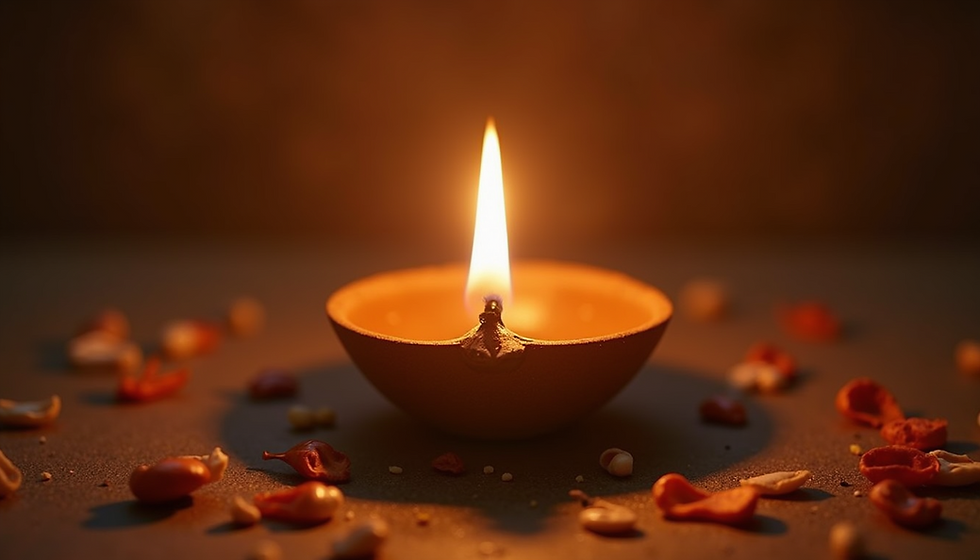The Rich Significance and Unique Traditions of Dussehra Celebrations
- prasannajyotdiyas
- Sep 26
- 3 min read

Dussehra, also known as Vijayadashami, is one of India's most important festivals. It represents the victory of good over evil and is celebrated with immense joy all over the country. This vibrant festival occurs on the tenth day of the Hindu month of Ashvin, typically landing in September or October. Dussehra has roots in ancient Indian epics and is filled with rich traditions and cultural meaning that resonate deeply with millions.
As families gather to celebrate, the festival serves as a powerful reminder of virtues like bravery and righteousness. At its core, Dussehra honors Lord Rama's victory over the demon king Ravana, symbolizing the emergence of good from the struggles against wickedness.
Historical Significance of Dussehra
The historical roots of Dussehra are heavily linked to the epic Ramayana. The story tells us that Lord Rama, along with his wife Sita and brother Lakshmana, fought valiantly against Ravana to rescue Sita from captivity. This incredible battle culminates in Ravana's defeat, an event celebrated as Dussehra.
This celebration is not merely a tale of bravery; it prompts us to reflect on our lives and consider the implications of righteousness (dharma) and unrighteousness (adharma). According to a survey, nearly 70% of people participating in Dussehra festivities state it prompts them to think about their personal struggles between good and bad choices.
Rituals and Traditions
Dussehra rituals vary widely by region, showcasing India's diverse culture. One of the most significant customs is the enactment of the Ramayana through Ramlila, a dramatic performance celebrating Lord Rama's life. These events are typically held in public spaces, attracting thousands of attendees and often culminating in a collective chant of victory.
Another vibrant aspect of Dussehra is the burning of effigies of Ravana, his son Meghnath, and brother Kumbhkaran. This act symbolizes the destruction of evil and is often accompanied by fireworks, with reports indicating that over a million people attend such celebrations in major cities like Delhi and Mumbai every year.
In many homes, families light ghee diyas (lamps) to signify the triumph of light over darkness. The ghee diya is not just an illuminating object; it embodies purity and serves as a spiritual focal point for the family during the festivities. Estimates show that around 80% of households light diyas, enhancing the festive atmosphere.
Community Celebrations
Dussehra is a festival deeply rooted in community spirit. Local fairs and gatherings play a crucial role, where people come together to enjoy traditional foods, music, and dances. The festive energy is undeniably lively, with families adorning themselves in regional clothing and participating in activities that strengthen community bonds.
The nine nights leading up to Dussehra are often celebrated as Navratri. Devotees worship the goddess Durga, seeking her blessings for success and strength. Reports suggest that participation in Navratri festivities has increased by approximately 25% over the past decade, showcasing how the festival continues to unite communities.
Regional Variations
While Dussehra's core essence remains consistent, the manner in which it is celebrated varies significantly across India. In northern states, the focus is predominantly on the Ramayana, while southern states primarily celebrate the goddess Durga.
For instance, in West Bengal, Dussehra transforms into the grand Durga Puja festival, where beautifully crafted idols of the goddess are paraded through the streets in vibrant processions. After several days of worship, the idols are immersed in water, marking the goddess’s return to her heavenly home. This finale often attracts crowds in excess of two million, underscoring the festival's cultural impact.
In Gujarat, the celebration includes traditional dance forms like Garba and Dandiya Raas, which deepen community ties and amplify festive joy. These dances revive traditions and foster a collective spirit, with thousands joining in public dances across cities.
The Modern-Day Celebration
In today’s world, Dussehra has adapted but retains its essential values. Urban areas host grand celebrations with elaborate decorations, cultural events, and community engagements, often drawing huge crowds. Dussehra serves as a vital reminder of unity and harmony in our increasingly fast-paced lives.
With social media’s rise, many share their Dussehra experiences online, enriching the festival’s visibility. Photos and videos capture joyous moments and vibrant celebrations, showcasing traditions to a broader audience. As a result, over 60% of young people report feeling connected to their culture through these online celebrations.
A Time for Reflection and Growth
Dussehra transcends the mere act of celebration. It represents a vital reminder of our shared human values and the continuous battle between good and evil. The traditions that surround Dussehra call for introspection, urging us to embody the virtues exemplified by Lord Rama in our everyday lives.
As families unite to enjoy community festivities, light ghee diyas, and participate in joyful events, the spirit of Dussehra continues to thrive. This festival encourages reflection, joy, and the commitment to nurture the light of goodness within us.






Comments